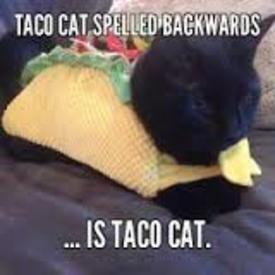My food scale has mL and fluid ounces... I'm confused.

vinegar_husbands
Posts: 1,498 Member
It's this one. Should I use mL/fl. oz when logging liquids, or should I just rely on measuring cups? I honestly have no idea why it would include mL/fl. oz, because they're units of volume. Can someone explain this to me?
0
Replies
-
Mine has the same functions. So far I haven't used them. I just put my blender bottle in and poured in water to the 8 oz mark. The scale registered 8.10 oz.0
-
They just assume that 1 mL = 1 g, which is true when we're talking water.0
-
merde_il_pleut wrote: »They just assume that 1 mL = 1 g, which is true when we're talking water.
This^^ It's useful for baking if you need a very specific amount of water, otherwise not so useful
0 -
Fluid oz are a measure of volume, dry oz in the measuring cups are a measure of volume, and regular old oz are a measure of weight. Volume is Weight/Density, and Weight is Density x Volume, and so on and so forth. It only matters if you are trying to get very precise measurements for fluids like you might need for baking, and the only thing you really need to keep in mind is if you are using a liquid measuring cup for liquids you're fine, but if you're using dry measuring cups you will often be getting slightly more liquid due to surface tension bulging over the lip of the cup. This shouldn't matter much for calories, unless you're measuring liquids such as oil or cream or somesuch in larger quantities.0
-
Additionally, you may have two unmarked bottles of liquid (say, heavy whipping cream and regular whipping cream) and you have forgotten which is which and you might need to be able to tell them apart by their density, and you can figure that out on the scale based on their volume and weight. So yeah, useful in a scientific sense, but probably not something you'll be using regularly.0
-
I figure it's pretty much a gimmick, because different liquids have different densities, and unless the scales know what they're measuring Mls OF, how could it be accurate? Water is 1ml per g, but it's different for other liquids.0
-
Alatariel75 wrote: »I figure it's pretty much a gimmick, because different liquids have different densities, and unless the scales know what they're measuring Mls OF, how could it be accurate? Water is 1ml per g, but it's different for other liquids.
^ This. It's a gimmick.0 -
I just go ahead and use the scale for fluids that are close to the density of water.
I know that half a cup of milk is 120ml so I just pour 120g of milk onto my 31g of cereal rather than washing the measuring cup. 0
0 -
my bet is that on the back there is a little reset button to switch to grams too. Because the description says it also measures grams and ounces But also when you look at one of the photo's you see clearly it says 0g.0
-
oh when you look the video of it then you can see you use the unite button to switch
 0
0 -
That's a pretty neat looking scale.
Mine has that feature as well, it just adds another click to scroll through when switching between grams an pounds. I've just use convert-to.com if I want to weigh something like olive oil.0 -
AreteAndWhimsy wrote: »Fluid oz are a measure of volume, dry oz in the measuring cups are a measure of volume, and regular old oz are a measure of weight. Volume is Weight/Density, and Weight is Density x Volume, and so on and so forth. It only matters if you are trying to get very precise measurements for fluids like you might need for baking, and the only thing you really need to keep in mind is if you are using a liquid measuring cup for liquids you're fine, but if you're using dry measuring cups you will often be getting slightly more liquid due to surface tension bulging over the lip of the cup. This shouldn't matter much for calories, unless you're measuring liquids such as oil or cream or somesuch in larger quantities.
Lipids don't have much surface tension ;-)0 -
This content has been removed.
This discussion has been closed.
Categories
- All Categories
- 1.4M Health, Wellness and Goals
- 398.2K Introduce Yourself
- 44.7K Getting Started
- 261K Health and Weight Loss
- 176.4K Food and Nutrition
- 47.7K Recipes
- 233K Fitness and Exercise
- 462 Sleep, Mindfulness and Overall Wellness
- 6.5K Goal: Maintaining Weight
- 8.7K Goal: Gaining Weight and Body Building
- 153.5K Motivation and Support
- 8.4K Challenges
- 1.4K Debate Club
- 96.5K Chit-Chat
- 2.6K Fun and Games
- 4.8K MyFitnessPal Information
- 13 News and Announcements
- 21 MyFitnessPal Academy
- 1.6K Feature Suggestions and Ideas
- 3.2K MyFitnessPal Tech Support Questions










